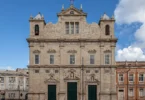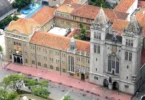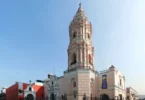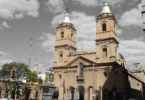Introduction
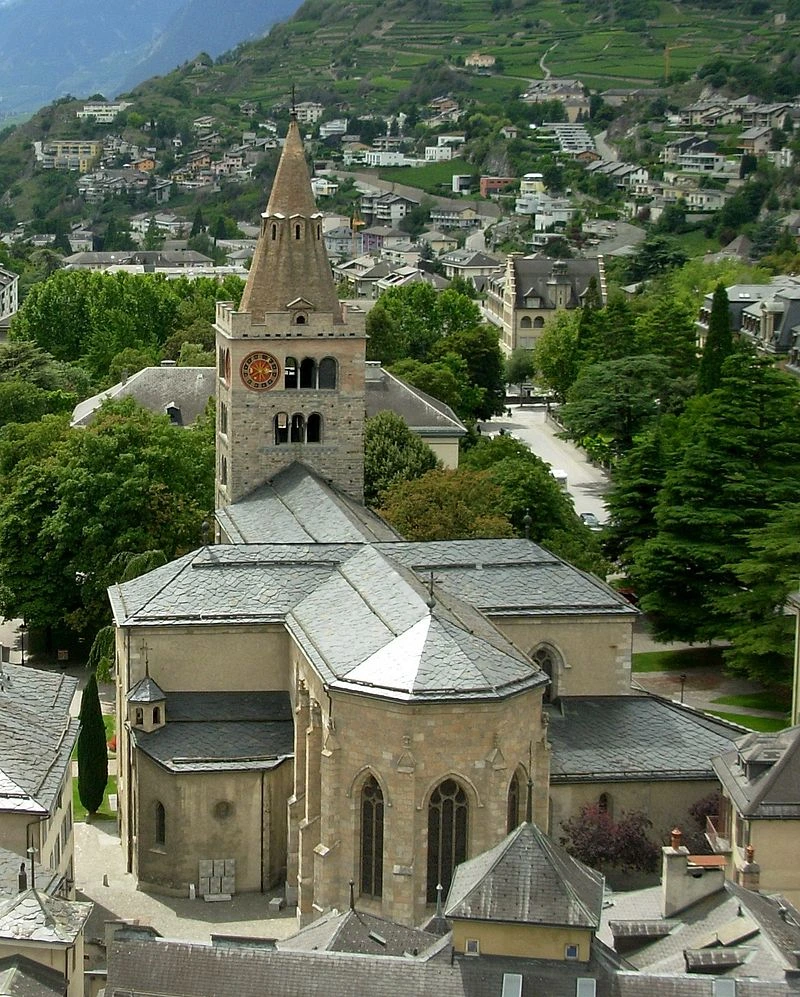
Sion Cathedral, also known as the Cathedral of Our Lady of Sion (or in French, Cathédrale Notre-Dame de Sion or sometimes Notre-Dame du Glarier), is the main Catholic church in Sion, a town in the Valais region of Switzerland. It’s basically the central church for the Diocese of Sion. The cathedral has a bit of a Byzantine look to it, and inside, you’ll find some really old Roman inscriptions, 15 different altars, and a bunch of old baptismal fonts. People sometimes just call it Our Lady of Glarier. It’s dedicated to the Virgin Mary and has been an important place for the local Catholic community for a long time.
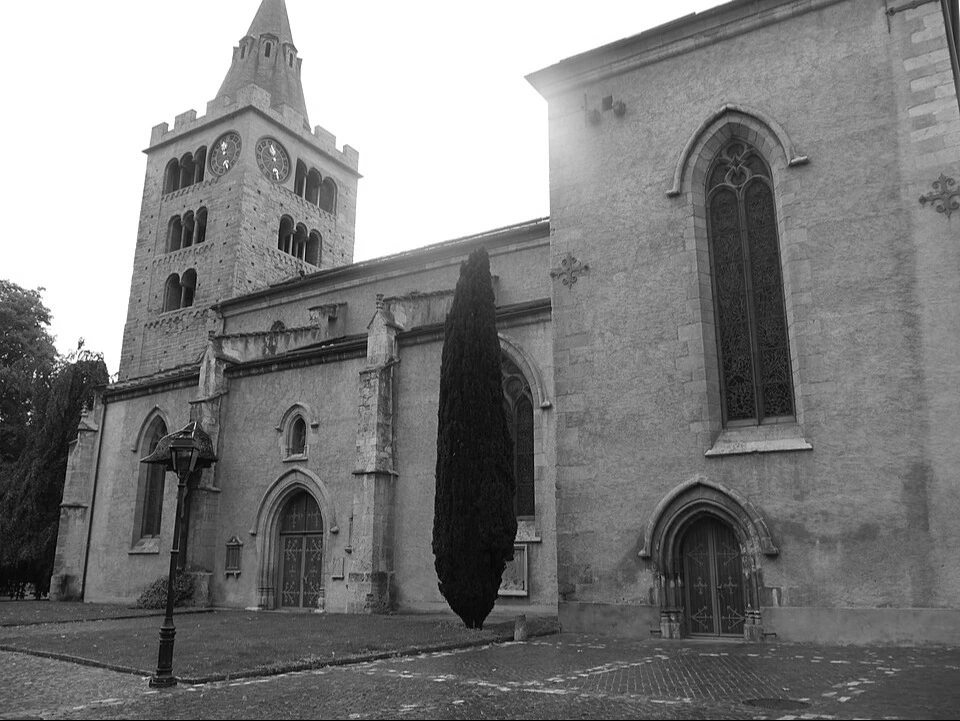
The Cathedral of Our Lady of Glarier also called Notre-Dame du Glarier is actually the youngest of all the medieval cathedrals in Switzerland. The name “Glarier” comes from the word for a spot where a river leaves behind silt and pebbles, like all those bits that settle after flooding. That’s the kind of ground it was built on. It’s not just some old church either. It’s both the main bishop’s church (that’s what “episcopal” means) and the local parish church. Basically, it belongs to the church community known as the Cathedral Chapter in Sion. Every year on August 15th, they celebrate its feast day that’s for the Assumption of the Virgin Mary.
The Churches That Came Before
The cathedral we see today is actually the third one built on that spot. The very first one goes way back to the 8th century. That one didn’t make it it burned down in a fire in the year 1010. So they built another one, in Romanesque style. That one stood for a while until 1352, when soldiers under Amadeus VI of Savoy came in and pretty much destroyed the whole thing burned it to the ground. Then in 1403, during the Corpus Christi festival, the attic of the bell tower caught fire by accident. The fire got so hot the church bells literally melted. And it didn’t end there. In 1418, Guichard of Raron and his followers came in and wrecked what was left of the place.
The Cathedral We See Today
After all that, the current version of the cathedral was finally built in the late 1400s and early 1500s. They used the remains of the Romanesque structure as the foundation. It took a few bishops over the years to get it done: Walter Supersaxo (1457–1482), then Jost of Silenen, Nicholas Schiner, and finally Cardinal Matthew Schiner, who stayed in charge until 1522. Even though they rebuilt most of it, they kept some parts from earlier the Romanesque bell tower and the porch from the 1100s are still there.
Fire, Repairs, and Restoration
The city of Sion had another big fire in 1788, and the roof of the cathedral got destroyed again. Later on, in 1947, Bishop Viktor Bieler decided to extend the choir area by adding two more bays (basically two extra sections in the back). The last big restoration happened in 1986 that’s the last time they really went in and fixed things up properly.
Architecture of Cathedral of Our Lady of the Glarier, Sion, Switzerland
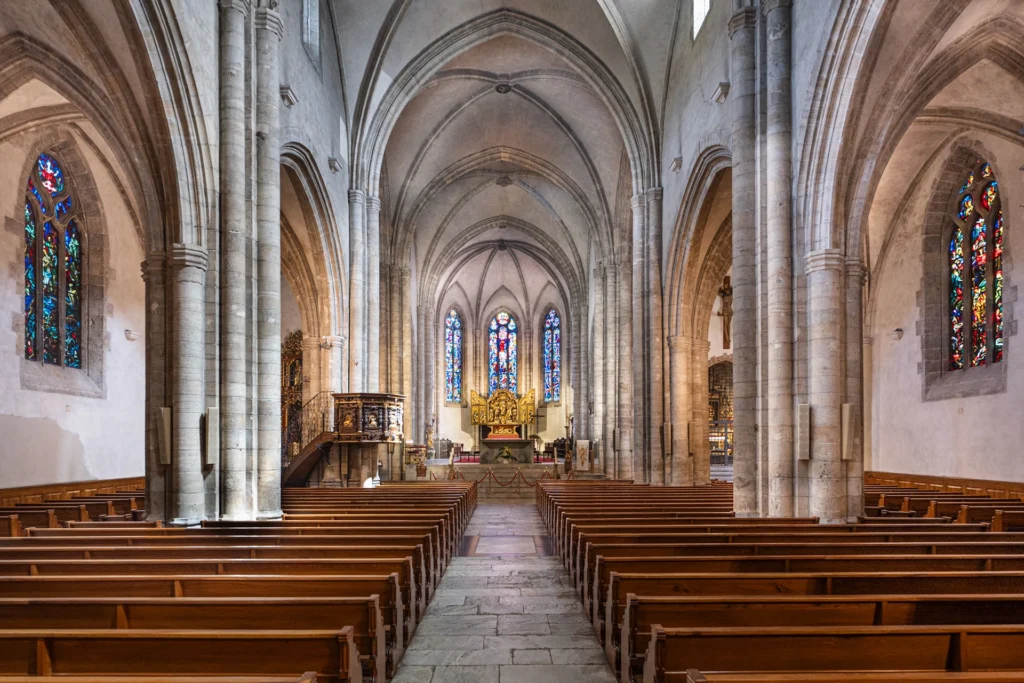
Architectural Style : Romanesque architecture
Architectural Grandeur
The cathedral’s architecture is a beautiful mix of styles. From the outside, you see Romanesque features like thick stone walls and rounded arches. Inside, the style changes to Gothic, with soaring vaulted ceilings and pointed arches that draw your eyes upward. The main entrance is especially striking, with detailed stone carvings telling stories from the Bible a real showcase of medieval craftsmanship.
Artistic Treasures Inside
Inside the cathedral, it’s not just the architecture that catches your eye. There are many impressive wall paintings dating back to the late Middle Ages. These paintings tell different religious stories and add color to the stone walls. The stained glass windows are another highlight some are medieval, while others were made in the 20th century. Together, they fill the space with colored light and bring a sense of history and beauty that has been built up over centuries.
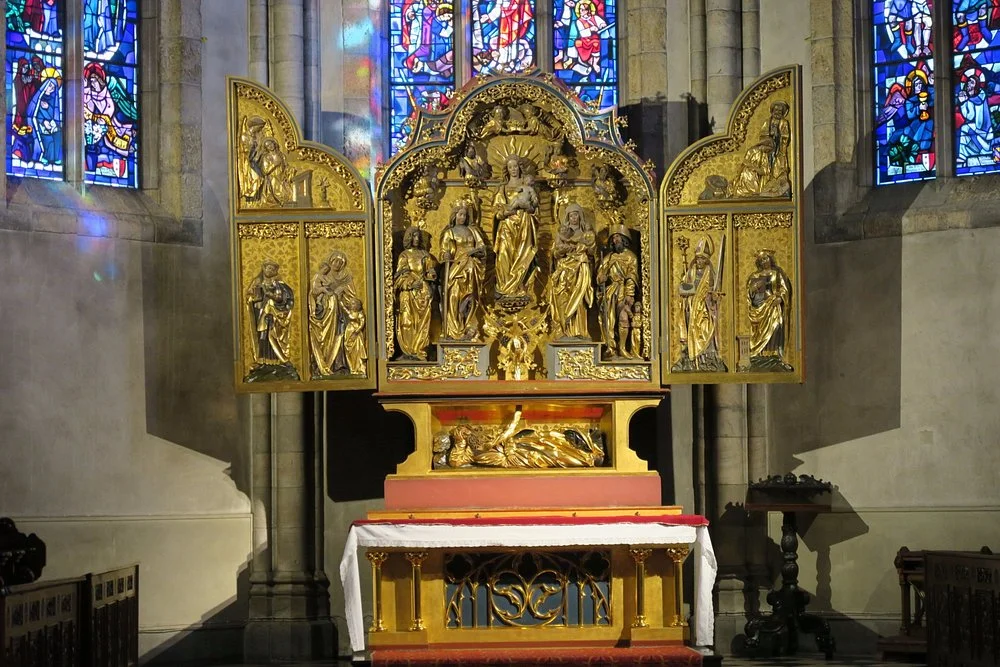
High Altar
So the high altar in the cathedral is this big Gothic piece called the “Jesse Triptych.” It didn’t originally belong to this church it used to be over at the Church of Saint-Théodule. They moved it and remodeled it in 1947. The central part of the altar is from the 15th century and shows a scene from the Bible Isaiah 11:1. Basically, it’s about how the Messiah (Jesus) comes from the family tree of Jesse, who was King David’s dad. In the artwork, you see Jesse sleeping, and a vine grows out from him. At the top of the vine are Mary and Jesus. Mary’s standing on a crescent moon, and around them are Saint Anne (Mary’s mom), baby Jesus, Judith, Saint John the Evangelist, and Saint Roch. On the left panel of the triptych, there’s the Annunciation (when the angel tells Mary she’s going to have Jesus), and on the right, there’s the Nativity. You also see Saint Théodule (he was a bishop in Sion) and Saint Barbara.
Episcopal Throne
The bishop’s throne is done in a Neo-Gothic style. It was made in 1947 and has the coat of arms of Bishop Victor Bieler on it.
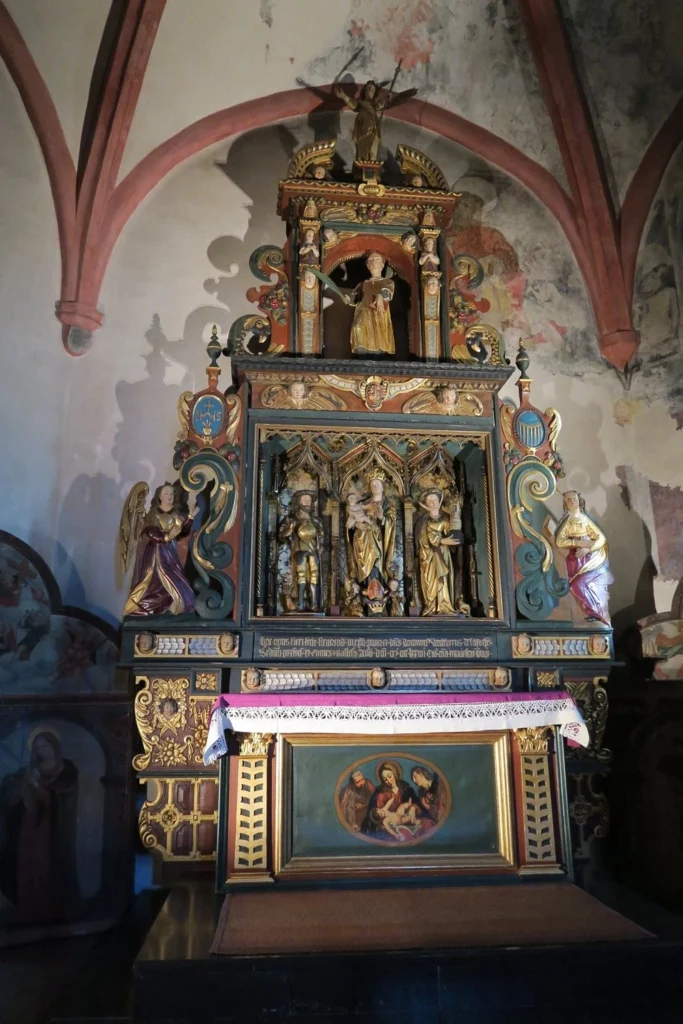
Chapel of Saint Barbara
This chapel is just to the right of the transept. It was built in 1474 by Bishop Walter Supersaxo. The altar is Gothic and shows the Virgin Mary, Saint Acacius (a soldier holding a cross and wearing a crown of thorns), and Saint Barbara. Right in front of the altar is the tomb of Supersaxo himself. In 1948, they found some really cool old frescoes there scenes like the wise and foolish virgins, Saint George saving the princess, and the martyrdom of Saint Sebastian. They were painted by Thomas von Landsberg, a Bavarian artist, back in 1475. Above the chapel gate, there’s a crucifix from 1520 in late Gothic style. Pretty striking when you walk in.
Saint Anthony Chapel
This one’s got a Baroque altar from 1683. In the center is Saint Anthony the one who lived as a hermit in Egypt. Around him are paintings taken from the old altars of the cathedral, done between the 1600s and 1800s. One of the standout paintings is of Saint Anthony of Padua, painted by Jacques-Arnold Koller.
The Chair (Pulpit)
The pulpit (where the priest or bishop preaches from) was built between 1622 and 1626. It’s got a fancy marble base, carved by Hans Studer, and shows the coat of arms of Canon Johann Lergien. The basin part has all these reliefs sculpted by Hans-Georg Miller and Balthazar Megelin you can see Jesus, the Lamb of God, and symbols for the Four Evangelists. To get up to the pulpit, there’s this old wrought-iron staircase with a railing from 1633. It’s detailed and beautiful.
Tribune
The upper gallery area called the tribune is decorated with stucco work. You’ll also see the coat of arms of Prince-Bishop Frédéric Ambuel and the cathedral chapter. That’s from around 1780.
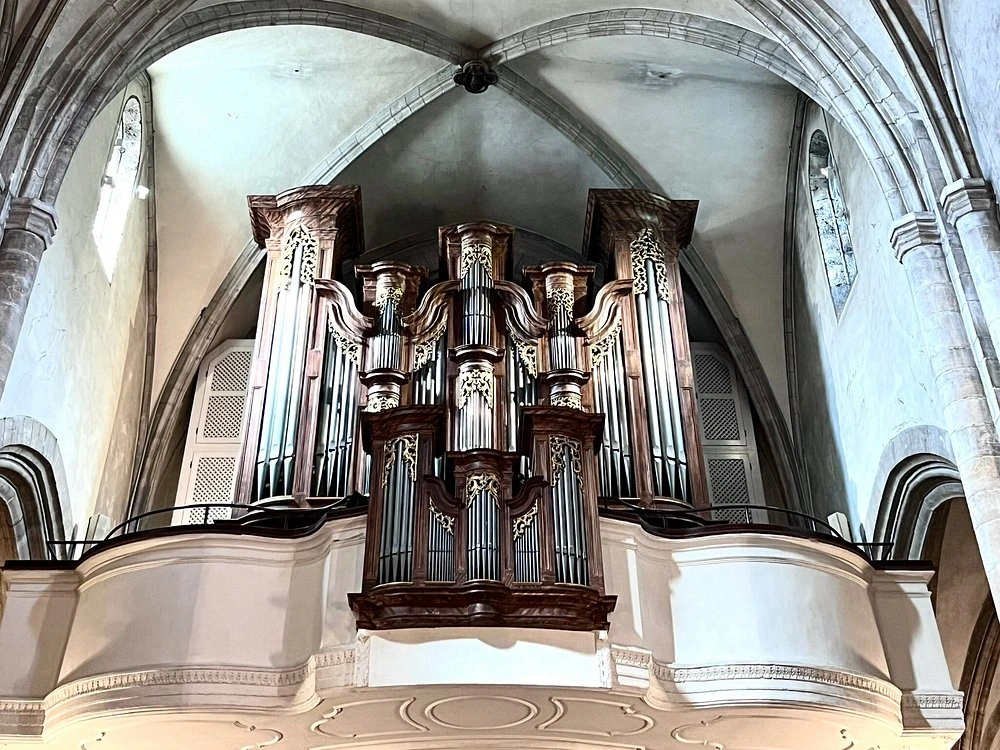
The Organ
The cathedral has had an organ since way back in 1370, but the one they have now was built in 1786 by the Carlen family a well-known line of organ builders from Reckingen. Felix Carlen, one of the most famous of them, lived from 1734 to 1816. In 1874, the organ was expanded to have 23 registers by a German builder named Merklin. Later, in 1912, Heinrich Carlen made it a pneumatic system. Then in 1986, it got fully restored to its original design by Hans J. Füglister from Grimisuat. Now it has three keyboards (manuals) and 49 registers. It’s not just big it’s actually one of the largest and most beautiful organs in the whole country.
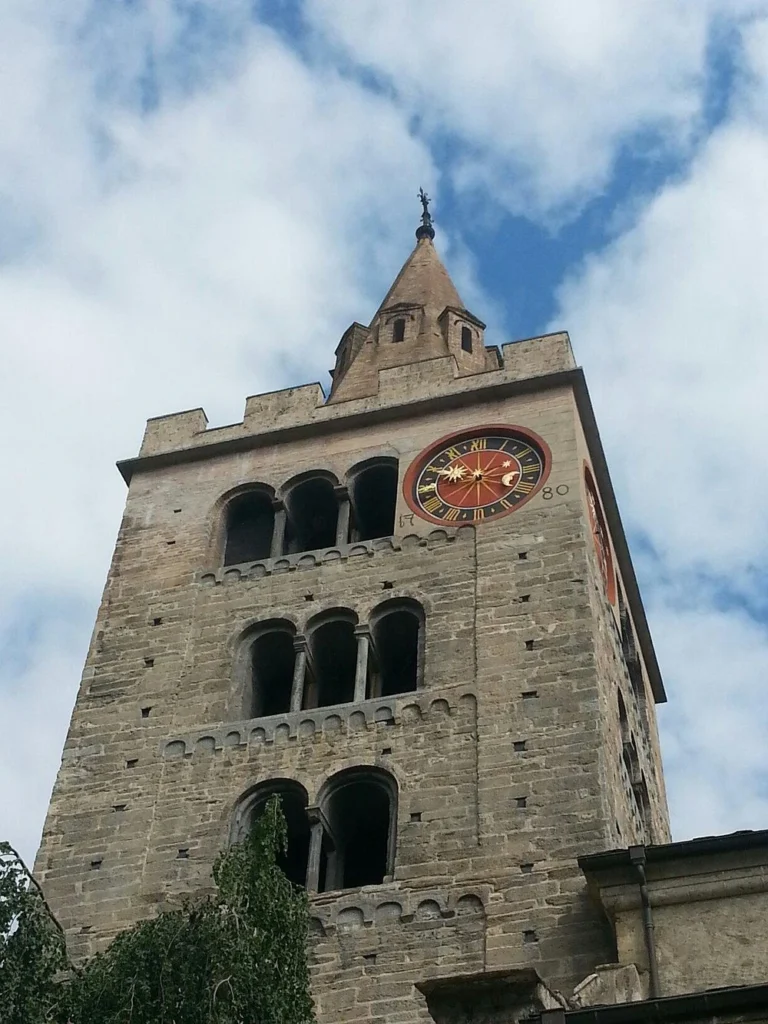
Bell Tower
The cathedral’s bell tower was built sometime between the late 12th century and early 13th century. The top part, including the brick spire, was added later, probably around the mid-15th century. The second floor of the tower has no windows. Around the top, there’s a decorative band of Lombard arches that mark the change from the solid base of the tower to the openwork upper floors. This style of Romanesque bell tower was very common around the year 1000 and can be found in churches in Cologne, Paris, and Lyon. In the Valais region, the abbey of Saint-Maurice had a similar tower in the 11th century.
Portico
At the base of the bell tower is a large semicircular portal, which is typical for Romanesque Alpine buildings and shows strong Lombard influence. Instead of carved stone, the tympanum above the door is painted. It depicts the Virgin and Child on a red background, flanked by two bishops and kneeling donors on a blue background. This style is similar to the decoration found in the church of Saint-Blaise in Bellinzona-Ravecchia from the late 14th century. The painting in Sion dates from around the late 14th or early 15th century and reflects the Italian Trecento style popular at the time.
Fresco – Tree of Jesse Triptych
The Tree of Jesse triptych is an important artwork, but its exact origins are a bit unclear. Some believe it was commissioned by Cardinal Mathieu Schiner in the 16th century. The carved figures in the center are from the late 15th century. In 1619, a Lucerne painter named Ulrich Hartmann added paint to the shutters and touched up the central figures. Until 1947, the lower part of the triptych was left plain not painted or gilded. It spent a long time at Valère before being brought back to the cathedral in 1947 when Bishop Victor Bieler decided to reuse the Gothic core. New shutters were added, using bas-reliefs from the Valère Museum. Some reliefs, like those of Saint Théodule and the Trinity of Saint Anne, might come from another 15th-century altarpiece in Upper Valais. The whole piece was repainted and gilded under Julius Salzgeber, a local artist and teacher.
The imagery shows Jesse lying asleep, with a vine growing from him. The vine has blue grape clusters and wraps around figures representing Christ’s ancestors holding scrolls. At the top stands the Virgin on a crescent moon, surrounded by the Trinity of Saint Anne, Saint Catherine, Saint John, and Saint Roch being healed by an angel squeezing the pus from his plague sore. On the left panel is the Annunciation, with the angel Gabriel visiting Mary. Below, you can see Saint Mary Magdalene holding an ointment jar and Saint Anne holding young Jesus and Mary this is called the Trinity of Saint Anne. The right panel shows the Nativity scene, with baby Jesus, Mary kneeling, and Joseph standing. Below are Saint Théodule, the bishop and patron of the diocese of Sion, and Saint Barbara. The old shutters are now kept in the Chapel of Saint Barbara.
Feast Day
Feast Day : 15 August
The Cathedral of Our Lady of the Glarier in Sion celebrates its feast day on August 15th, the Feast of the Assumption of Mary. This day honors Mary’s being taken into heaven and is marked with special church services.
Church Mass Timing
Yet to Update
Church Opening Time:
Open 24 Hours
Contact Info
Address : Cathedral of Our Lady of Sion
Rue de la Cathédrale 13, 1950 Sion, Switzerland.
Phone : +41 27 322 80 66
Accommodations
Connectivities
Airway
Cathedral of Our Lady of the Glarier, Sion, Switzerland, to Sion Airport, Rte de l’Aéroport, distance 7 min (2.7 km) via Av. du Petit-Chasseur and Rte de l’Aéroport.
Railway
Cathedral of Our Lady of the Glarier, Sion, Switzerland, to Pl. de la Gare 1 1950 Sion railway station, distance between 3 min (850.0 m) via Av. de la Gare.


